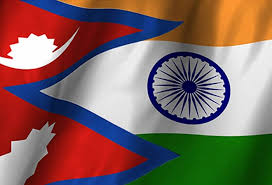
In a significant stride towards enhancing cultural ties and promoting Sanskrit education, scholars from Nepal and India recently convened in Kathmandu for the Nepal-India International Sanskrit Conclave. The three-day event culminated in the adoption of a five-point resolution aimed at fostering collaboration and academic exchanges between the two nations in the realm of Sanskrit studies.
One of the pivotal resolutions proposed during the conclave is the establishment of an annual International Sanskrit Conference, signaling a sustained commitment to scholarly dialogues and exchanges. This initiative seeks to provide a platform for Sanskrit scholars from both countries to convene, share research findings, and engage in intellectual discourse, thereby enriching the field of Sanskrit studies.
Another significant aspect of the resolution is the proposal to establish a dedicated study center focused on Sanskrit scriptures, particularly manuscripts found in Nepal. This center, in collaboration with institutions like Maharshi Sandipani Veda Vidya Pratisthan in Ujjain, aims to facilitate research, publication, and preservation of Sanskrit heritage, contributing to the global understanding and appreciation of this ancient language.
The conclave also emphasized the development of gurukuls in Nepal through collaborative efforts with educational institutions in India. This initiative, supported by the Central Sanskrit University in Delhi, aims to enhance Sanskrit learning opportunities for Nepali students, fostering a deeper understanding and engagement with the language and its rich literary tradition.
An integral part of the resolution is the recognition of Niti Anusandhan Pratisthan Nepal as the headquarters of the Nepal-India Sanskrit Study Centre. This center will serve as a hub for joint research endeavors, publication projects, and the study of Sanskrit manuscripts, further strengthening academic cooperation and knowledge exchange between Nepal and India.
The abundance of unpublished Sanskrit manuscripts in Nepal, estimated at around five lakh, underscores the importance of concerted efforts to preserve and study this invaluable cultural heritage. Through collaborative research initiatives and scholarly exchanges facilitated by the study center, these manuscripts can be brought to light, contributing to a deeper understanding of Sanskrit literature and its historical significance.
Furthermore, the conclave’s resolution highlights the promotion of religious, cultural, philosophical, historical, and archaeological aspects of Nepal and India, alongside the preservation and promotion of Sanskrit, Pali, and Prakrit languages. This holistic approach acknowledges the interconnectedness of language, culture, and heritage, fostering mutual respect and appreciation between the two nations.
The collaborative efforts initiated at the Nepal-India International Sanskrit Conclave reflect a shared commitment to preserving and promoting Sanskrit heritage while fostering closer ties between Nepal and India. By leveraging academic expertise, research collaboration, and educational initiatives, both countries aim to revitalize Sanskrit studies and ensure its enduring legacy for future generations.
The successful conclusion of the conclave, with over 120 Sanskrit scholars, professors, and government officials in attendance, underscores the enthusiasm and dedication towards advancing Sanskrit education and cultural exchange. Moving forward, sustained efforts and continued collaboration will be essential in realizing the shared vision of a vibrant and thriving Sanskrit scholarly community bridging Nepal and India.










